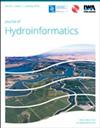从数字孪生范式到数字供水服务
IF 2.2
3区 工程技术
Q3 COMPUTER SCIENCE, INTERDISCIPLINARY APPLICATIONS
引用次数: 0
摘要
在供水网络(wdn)的背景下,研究人员和技术人员正在积极探索向数字时代过渡的新途径。他们专注于创建适合这些系统独特特征的标准化方法,重点是开发定制的数字双胞胎。这需要将先进的水力建模与先进的数据驱动技术(如人工智能、机器学习和深度学习)相结合。本文首先详细概述了导致这种数字化转型的重要进展。它强调了创建互联数字水务服务(DWSs)的潜力,可以支持水务服务管理、规划和设计的各个方面。这种方法引入了标准化的程序,允许不断改进这些网络的数字表示。此外,技术人员还可以从作为QGIS软件插件开发的DWSs中获益。这些服务战略性地增强了他们对技术决策的理解,改进了短期和长期管理任务的逻辑推理、一致性、可伸缩性、可集成性、效率、有效性和适应性。值得注意的是,该框架保持适应性,随时准备接受即将到来的技术进步和数据收集功能,同时保持最终用户在塑造这些技术发展方面的中心地位。本文章由计算机程序翻译,如有差异,请以英文原文为准。
From digital twin paradigm to digital water services
Abstract In the context of water distribution networks (WDNs), researchers and technicians are actively working on new ways to transition into the digital era. They are focusing on creating standardized methods that fit the unique characteristics of these systems, with a strong emphasis on developing customized digital twins. This involves combining advanced hydraulic modeling with advanced data-driven techniques like artificial intelligence, machine learning, and deep learning. This paper begins by giving a detailed overview of the important progress that has led to this digital transformation. It highlights the potential to create interconnected digital water services (DWSs) that can support all aspects of managing, planning, and designing WDNs. This approach introduces standardized procedures that allow a continuous improvement of the digital representation of these networks. Additionally, technicians benefit from DWSs developed as QGIS software plugins. These services strategically enhance their understanding of technical decisions, improving logical reasoning, consistency, scalability, integrability, efficiency, effectiveness, and adaptability for both short-term and long-term management tasks. Notably, the framework remains adaptable, ready to embrace upcoming technological advancements and data gathering capabilities, all while keeping end-users central in shaping these technical developments.
求助全文
通过发布文献求助,成功后即可免费获取论文全文。
去求助
来源期刊

Journal of Hydroinformatics
工程技术-工程:土木
CiteScore
4.80
自引率
3.70%
发文量
59
审稿时长
3 months
期刊介绍:
Journal of Hydroinformatics is a peer-reviewed journal devoted to the application of information technology in the widest sense to problems of the aquatic environment. It promotes Hydroinformatics as a cross-disciplinary field of study, combining technological, human-sociological and more general environmental interests, including an ethical perspective.
 求助内容:
求助内容: 应助结果提醒方式:
应助结果提醒方式:


